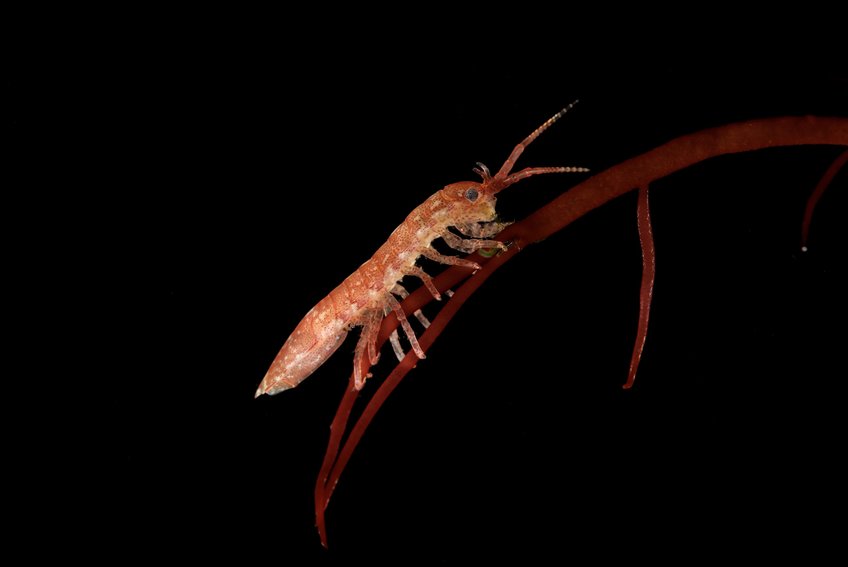2022-07-28 マックス・プランク研究所

The marine isopod Idotea balthica
© Wilfried Thomas, Station Biologique de Roscoff (SBR)
国際研究チームは、小型甲殻類イドテア・バルシカが紅藻グラシラリア・グラシリスの受粉に役立つことを明らかにしました。
<関連情報>
- https://www.mpg.de/19006751/the-bees-of-the-oceans
- https://www.science.org/doi/10.1126/science.abo6661
海の受粉者。海藻における動物媒介の受精の発見 Pollinators of the sea: A discovery of animal-mediated fertilization in seaweed
E. Lavaut ,M.-L. Guillemin ,S. Colin,A. Faure,J. Coudret,C. Destombe,M. Valero
Science Published:28 Jul 2022
DOI: 10.1126/science.abo6661
“Pollination” of red algae
Pollination by animals is a widespread and important symbiotic relationship that increases plants’ genetic diversity and fertilization success. Lavaut et al. discovered that this relationship is not unique to plants; it is also found in the dioecious red alga Gracilaria gracilis (see the Perspective by Ollerton and Ren). The isopod Idotea balthica carries the alga’s spermatia on its body, and experiments showed that isopods moving from a male to a female alga increased the alga’s fertilization. Transport of algal gametes by isopods could be an important mechanism for reproduction because the spermatia lack flagella and otherwise rely on water currents to transport them. —BEL
Abstract
The long-held belief that animal-mediated pollination is absent in the sea has recently been contradicted in seagrasses, motivating investigations of other marine phyla. This is particularly relevant in red algae, in which female gametes are not liberated and male gametes are not flagellated. Using experiments with the isopod Idotea balthica and the red alga Gracilaria gracilis, we demonstrate that biotic interactions dramatically increase the fertilization success of the alga through animal transport of spermatia on their body. This discovery suggests that animal-mediated fertilization could have evolved independently in terrestrial and marine environments and raises the possibility of its emergence in the sea before plants moved ashore.


